Duc’s Tale: Catching Up with the Surviving Vietnamese Conjoined Twin Separated by Surgery
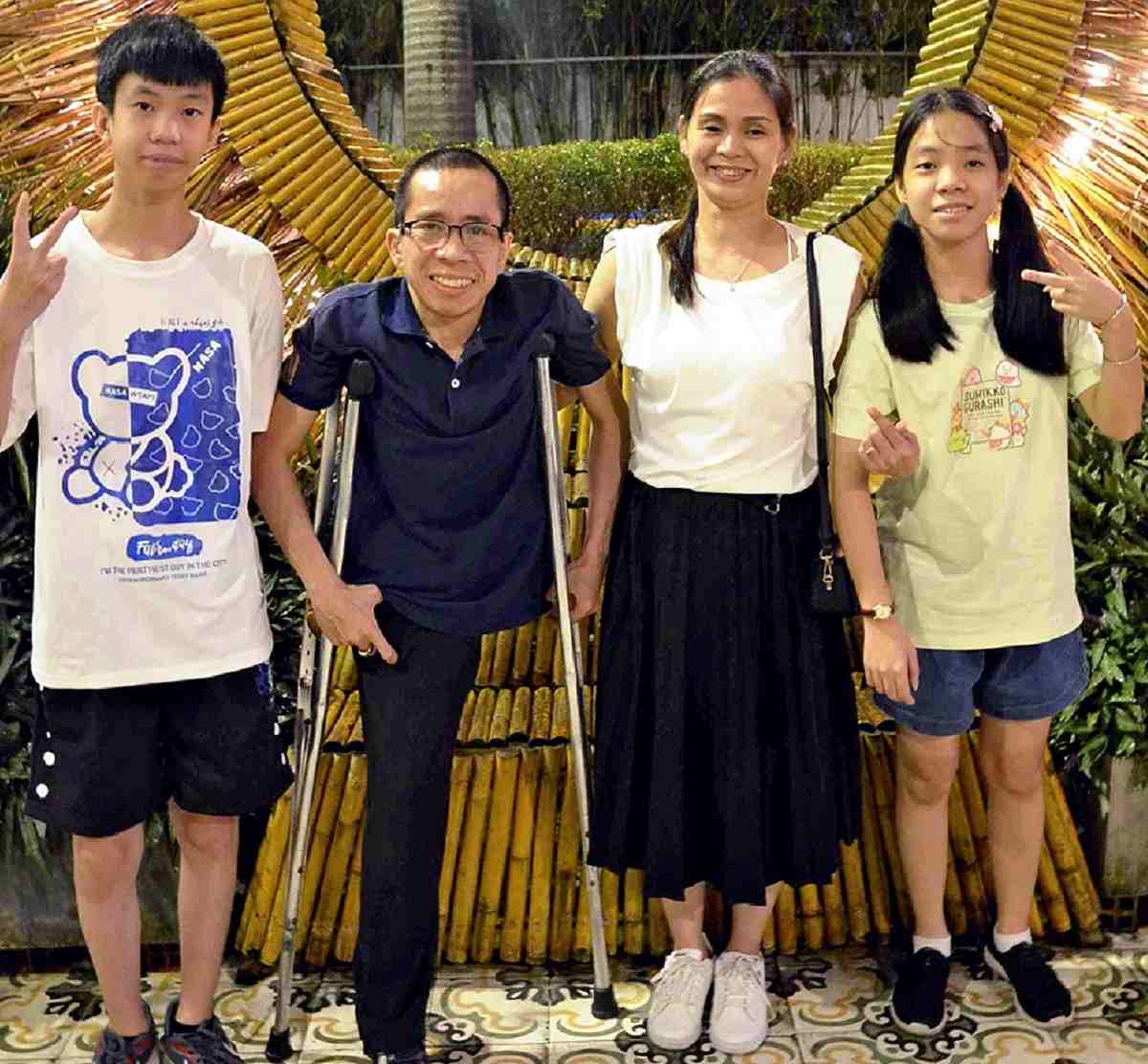
Nguyen Duc and his family pose for a photo in Ho Chi Minh City on June 16. From left are son Phu Si, Duc, his wife Tuyen and daughter Anh Dao.
9:00 JST, August 19, 2023
HO CHI MINH CITY — As the anesthetic wore off, a strange feeling came over Nguyen Duc. His brother, who had always been on his left side, was no longer there.
“Nandakana, nandakana …” he mumbled in the broken Japanese he had learned. “What happened?”
At Tu Du Hospital in Ho Chi Minh City on Oct. 4, 1988, the then 7-year-old Duc had undergone surgery to be separated from his conjoined twin brother Viet.

Duc, left, and Viet in a custom-made wheelchair provided from donations in Japan
Born in a village that had been sprayed with the toxic herbicide Agent Orange during the Vietnam War, the lower halves of the twins’ bodies were connected.
The intense pain shooting through Duc’s lower abdomen was proof positive that he had indeed been separated from his brother. “I’m finally free,” he thought, but at the same time, was overcome with an indescribable sense of loss.
Viet had been in a vegetative state and never recovered after the surgery, and eventually died in 2007.
But what has become of Duc? The Yomiuri Shimbun caught up with him at his home in Vietnam. Now 42, he talked freely about his brother, the surgery, his links with Japan, and the life he was able to eventually lead.
Duc was able to go to school, get a job, get married and even become a father — all the trappings of a normal life, despite the far-from-joyous way it started.
When the twin boys came into this world on Feb. 25, 1981, in a poor farming village in the central highlands of Vietnam, it was not to a cordial welcome.
Two distraught uncles who saw the twins called them “monsters,” their mother Lam Thi Hue recalls. “They demanded that they be brought to the river bank to be burned … I was so terrified that they would set the twins on fire.”
The U.S. military had launched a campaign of spraying Agent Orange during the war in the 1960s and 1970s, and Hue, 69, remembers a whitish powder covering a cassava field in the hills.
Hue did not want to give up her newborns, but fearing for their lives, decided it was best to agree to have them transferred out of her care to a larger hospital.
“I said: ‘Don’t burn my babies. If I can’t raise them, I’ll send them to the authorities for adoption,’” Hue says.
The twins were sent to the Vietnam-East Germany Friendship Hospital in Hanoi, where they were named “Viet” and “Duc” after the hospital’s name in Vietnamese.
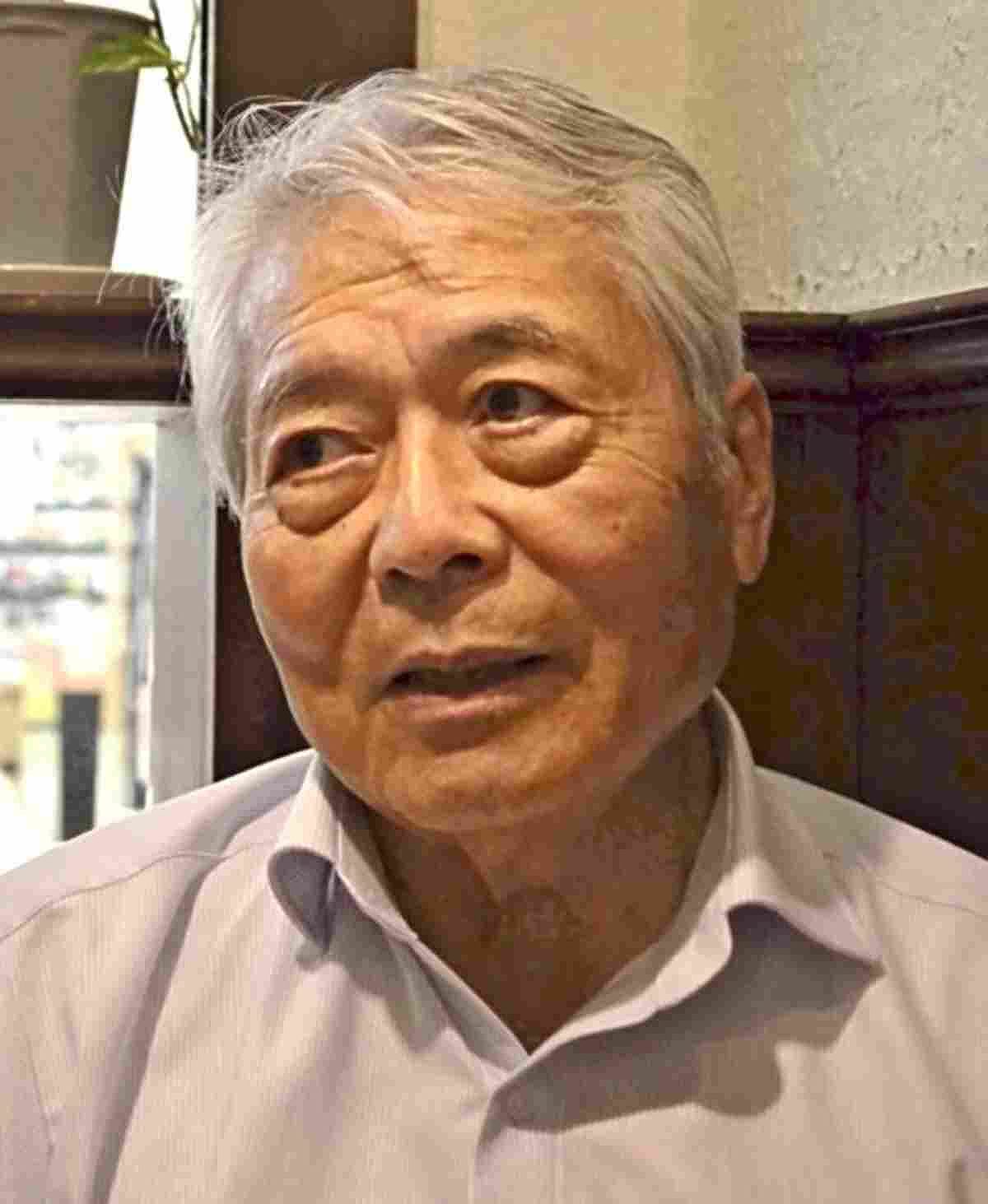
Photojournalist Goro Nakamura
Goro Nakamura, 82, a photojournalist who has long written on the effects of Agent Orange, first encountered the twins at the hospital in December 1981. He could not hide his shock. “There are actually children like this?” he recalls thinking.
In those days in Vietnam, there were other cases of conjoined twins, but most were stillborn or died soon after birth. It was the first time Nakamura had seen a living pair. “These boys probably only have one or two years to live,” Nakamura recalls thinking at the time.
The twins were sent south to Ho Chi Minh City and admitted to Tu Du Hospital, which was known as the leading facility for disabled children. It would be their “home” into adulthood.
A turn for the worse
Having to share everything growing up became a matter of course, Duc recalls, and he never gave it a second thought.
“I don’t remember much because I was so young,” Duc says. “We played with each other when preparing to eat, we argued over toys, watching TV … Sometimes we got angry. [But] no fighting at all.”
Shiga University Emeritus Prof. Bunro Fujimoto, 88, visited the hospital in February 1985 as part of his studies on the disabled. He recalls smiling when he saw the twins riding on a catering cart.
“They were so spirited that you wouldn’t feel they had disabilities,” Fujimoto says. “They shined and were so full of life.”
Upon returning to Japan, Fujimoto raised money for a specially made wheelchair that he sent to the twins. That allowed them to move freely around the hospital, and they would use it to even play ball games.
But the good days came to an abrupt end.
In May 1986, Viet developed a high fever and fell into a coma. He was diagnosed with acute encephalopathy. The large doses of medication to treat Viet also affected Duc, who had bouts of nausea and pain.
Had the fever spread to Duc, it could have been fatal to both. Vietnam only had a rudimentary medical system and was incapable of handling the crisis. The hospital sought advice from the Vietnam Red Cross Society, which contacted the Japanese Red Cross Society in an appeal for emergency assistance.
The JRCS initially responded cautiously, as a causal relationship between Agent Orange and conjoined twins had not been formally established.
“There were concerns that, given the politically sensitive nature of the issue, providing assistance might undermine the neutrality of the Japan Red Cross,” explains Tadateru Konoe, 84, who was in charge of the JRCS’s international affairs at the time.
Japanese public opinion, however, compelled the JRCS to take action. The twins’ case spurred strong emotions over the “scars” left by wars, and gained wide media coverage in Japan.
In June 1986, Viet and Duc were flown on a Japan Airlines plane from Ho Chi Minh City to Tokyo, where they were transported to the Japanese Red Cross Medical Center in Hiroo in Shibuya Ward. They remained hospitalized for about four months, undergoing extensive testing and receiving medication.
Cash donations flowed into the hospital and in one week, children from around the country sent as many as 100 toys or packages of candy. Duc recovered, and Viet escaped the immediate crisis but remained barely conscious.
After returning to Vietnam, Duc was forced to spend the days in bed. Some nights, Viet would go into convulsions, keeping Duc from falling asleep. The situation continued for about two years.
One could hardly fault Duc for harboring visions of a life of his own. “Being separated … I would be independent and have a better life,” he thought.
Successful surgery
The operation was set for Oct. 4, 1988. Before dawn, about 70 doctors and nurses gathered at Tu Du Hospital, along with about 100 reporters. The surgery to separate the twins began in the morning.
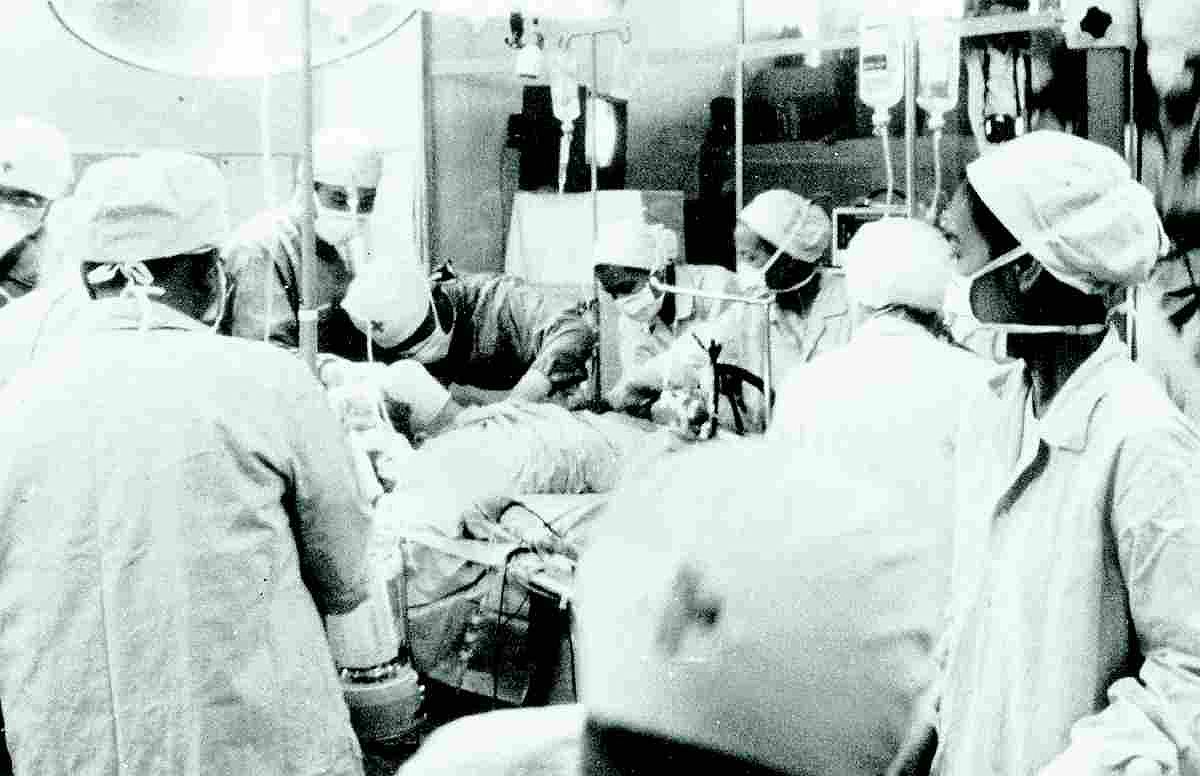
The 15-hour-long operation to separate Viet and Duc in October 1988
Duc recalls the room being filled with many machines, and the operating table feeling cold. He was not afraid. He has a vague memory of the moments before the anesthesia took effect.
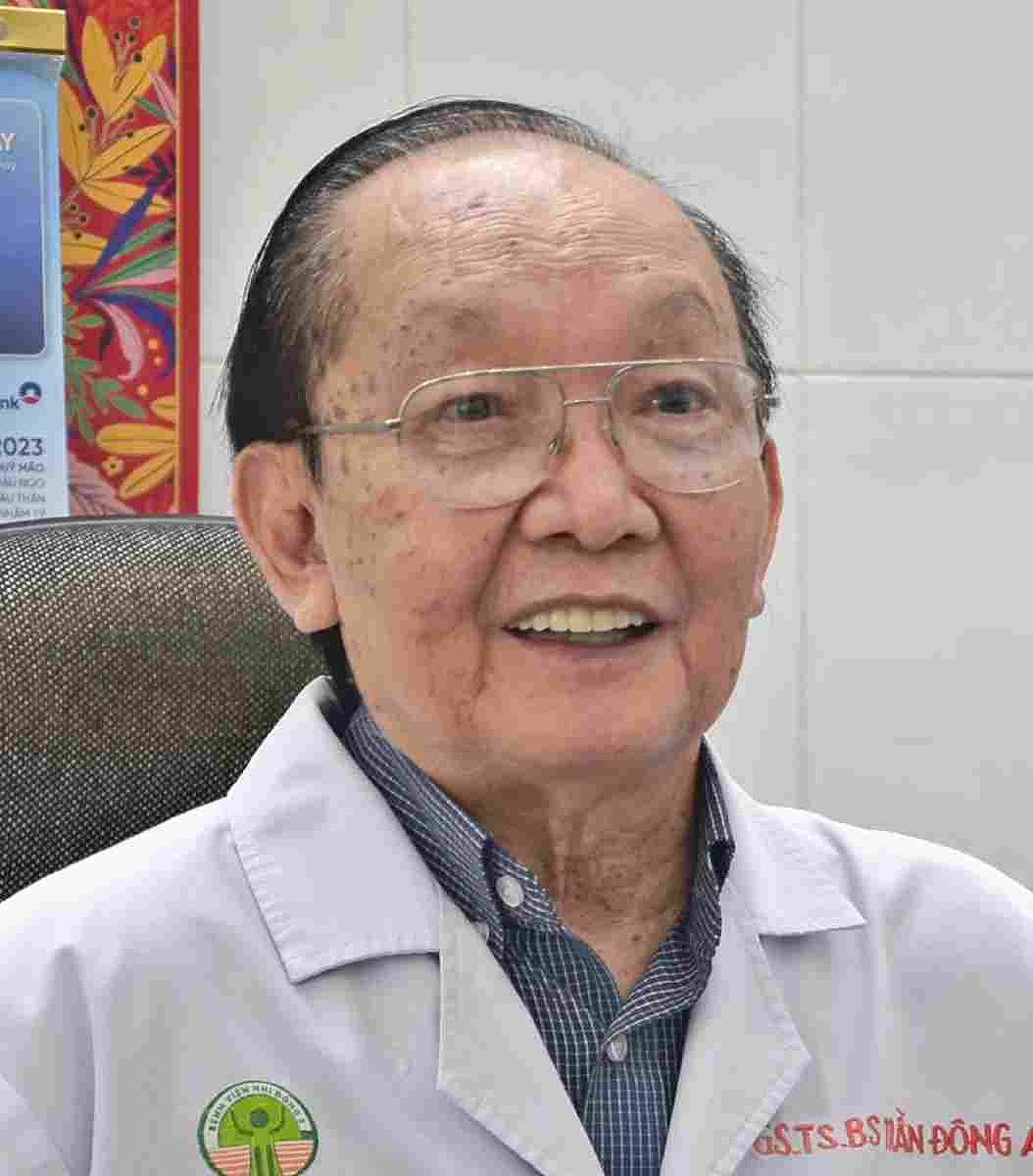
Dr. Tran Dong A
With the eyes of the world watching, chief surgeon Dr. Tran Dong A, now 82, says he knew he couldn’t afford to make a mistake.
The separation of the two had been a pending issue since their birth. The Vietnamese side had wanted the surgery be performed while they were in Japan, but it didn’t happen. There were ethical questions: Should the bedridden Viet be sacrificed and priority given to the healthy Duc? Or should they look for a way of possibly keep them both alive? On top of that, doctors did not have parental permission to perform the surgery.
Vietnamese doctors debated the issue day after day. In the end, it was decided that Viet and Duc would each receive a kidney and leg, while Duc would receive the genitals, anus and other organs of which there was only one.
Nakamura was among those allowed in the operating room, which he says was in recognition of his years of research on the harmful effects of Agent Orange. “The hip bone connecting the two was split using a huge saw and a chisel,” he said. “It was shocking.”
The surgery lasted 15 hours, and was deemed a success. The JRCS provided backup support by providing medical equipment and dispatching doctors and technicians.
“If the two had remained conjoined, there is no way [Duc] could have lived freely,” says Dr. Nguyen Thi Ngoc Phuong, 79, who had been the twins’ primary physician at Tu Du Hospital. “Couldn’t go to school. Unable to meet friends, do volunteer work, meet his wife, get married, have children.
“I think the biggest success of the operation is the humanitarian factor, that we saved a person’s life.”
Rocky reunion
Duc’s new life as an individual was not smooth sailing.
He was finally able to go to school as had always wanted, but had trouble memorizing things and could not keep up with his classes, which doctors attributed to the effects of excessive medication. He quit junior high school and enrolled in a computer training school.
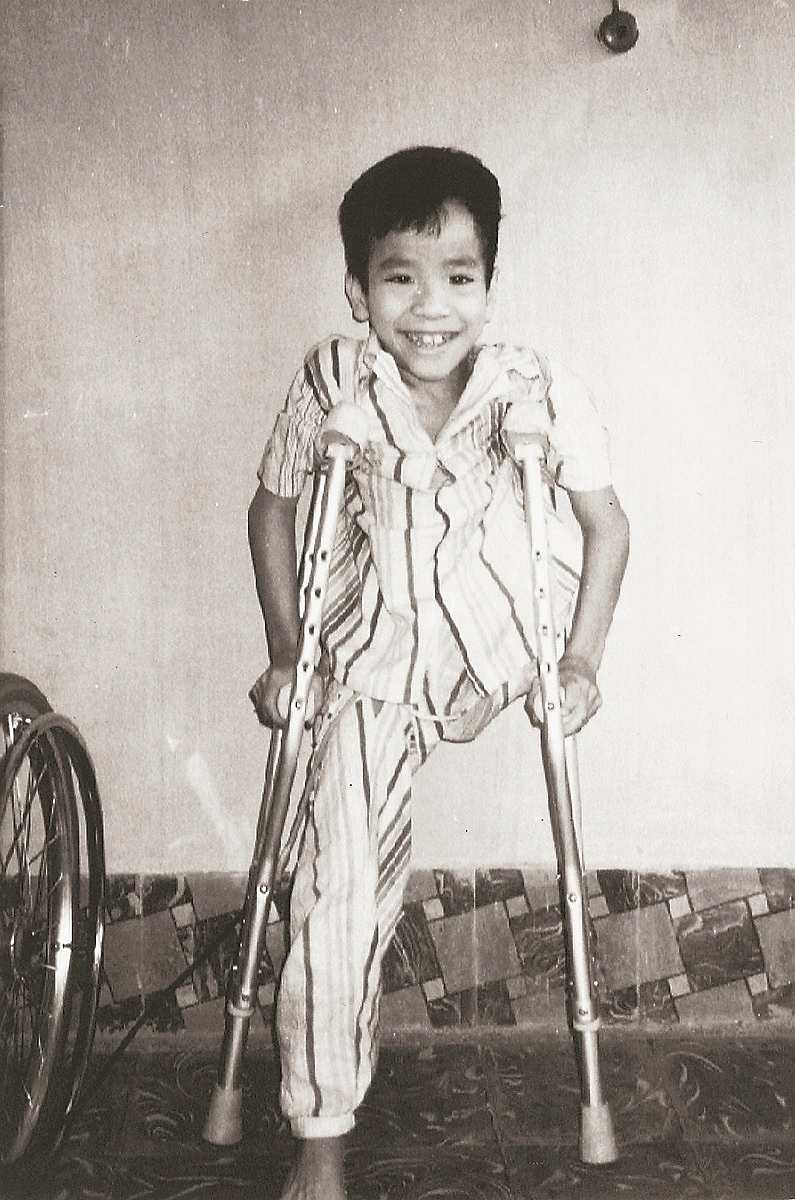
Duc smiles as he begins training for using crutches after the separation operation in March 1989.
His special circumstances inadvertently served to hinder Duc’s mental development. His nurses were overly kind and catered to his every need. The media showered attention on him, and he took gifts he received for granted.
“Duc was a child who was pampered from a very young age,” Phuong said. “It is very difficult to teach somehow to not be spoiled — this is very tough.”
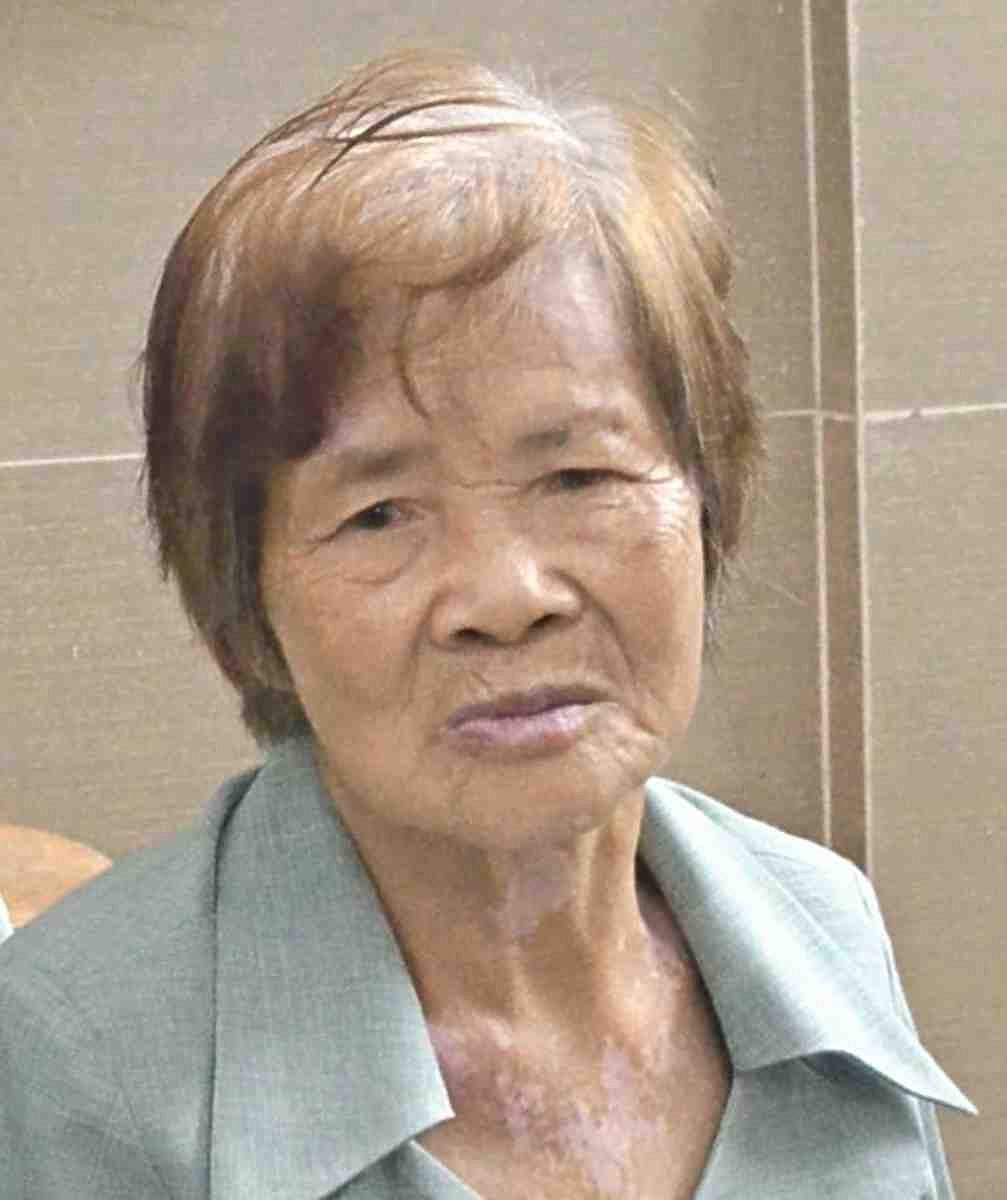
Lam Thi Hue
Duc was reunited with his mother, but the relationship was rocky. The hospital had tracked down Hue to obtain permission for the surgery, and she later moved into the hospital and began working there. But for Duc, she was more a stranger than family, someone speaking an unfamiliar dialect whom he was meeting for the first time.
His feelings, however, never changed for Viet, who had remained in a vegetative state after the surgery. “Every day when I came home from school, I still said hello to Viet, held his hand,” Duc recalls, adding that he felt Viet was smiling back at him.
In 2003, Duc was given an administrative job at Tu Du Hospital, and in 2006, he married Nguyen Thi Thanh Tuyen, whom he had met at a friend’s wedding.
“Everyone in the family objected to Duc and I being a couple,” Tuyen, 41, says. “But I said I would be responsible for my own love.”
Duc says it had been his dream since childhood to eat meals with his family in his own home, to sleep in his own bed. After getting married, he bought a home with a loan and left the hospital. He hoped to eventually take in Viet.
Symbol of war sufferers
The call from Tu Du Hospital came on the night of Oct. 5, 2007. Viet had taken a turn for the worse. Duc rushed to the hospital and was by his side when Viet passed away peacefully in the early hours the next day.
Viet’s condition had been deteriorating for several months. Duc had checked up on Viet every day and had prepared himself for the inevitable. Even so, he could not stop crying over his brother’s passing.
“I felt very sad,” Duc says. “I was not born to live in a perfect family with parents and siblings. I was born with a brother next to me, stuck to the flesh, being separated and living in the same room for 19 years. But now he’s gone. I felt very shocked.”
Viet died without ever having gone to school nor having encounters with society in his 26 years on Earth. “My brother had sacrificed a lot for me,” Duc came to realize.
Duc had never liked to talk about his life, but after Viet’s death, his feeling changed. He believed that he had a meaningful story to tell that could help others. He established a nonprofit organization where he gives lectures, donating the fees he receives to victims of Agent Orange.
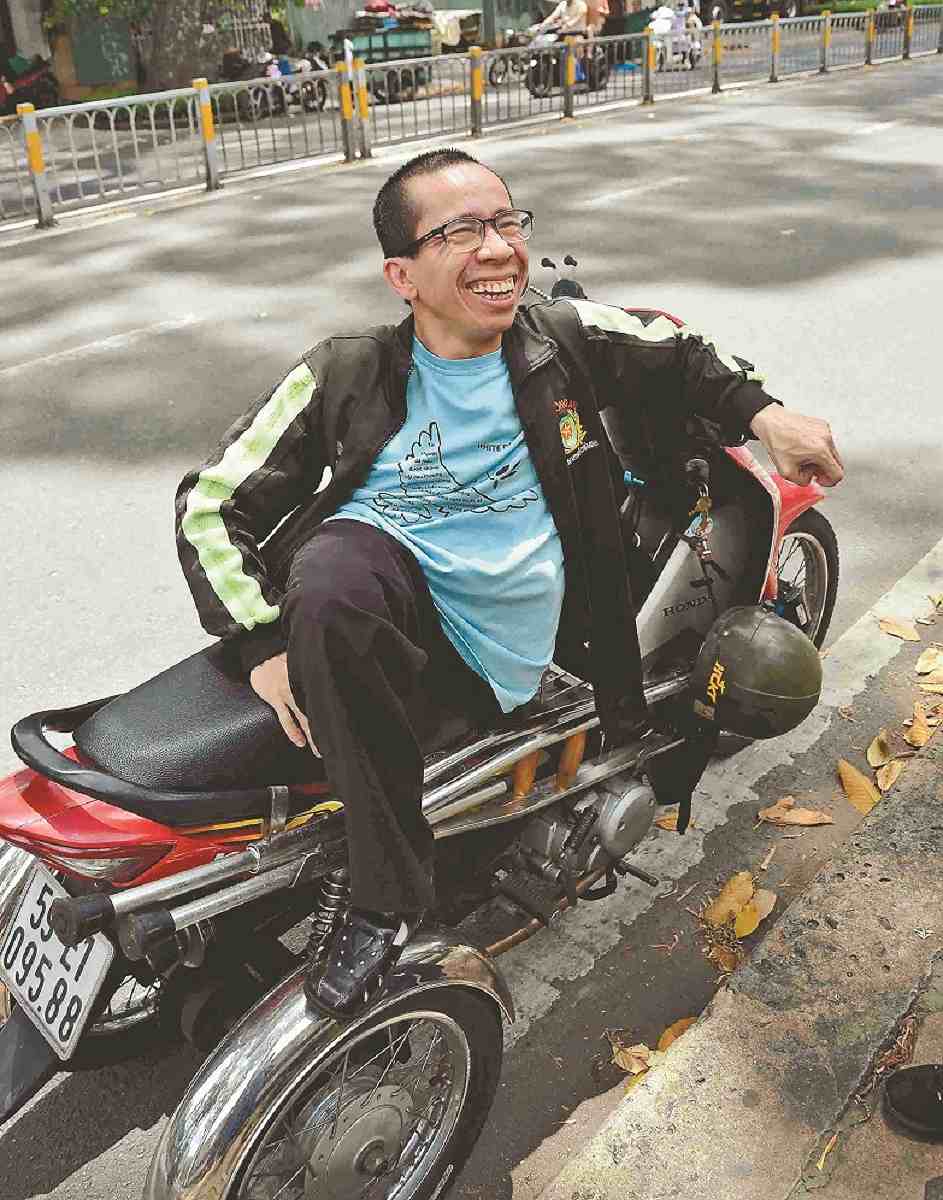
Duc sits on his beloved three-wheeled motorcycle that can hold his crutches in Ho Chi Minh City on June 18.
“Duc has grown up,” says Nakamura, looking back on their 40-year relationship. “He is aware of his continuing role as a symbol of the victims of war.”
In October 2009, Duc and Tuyen became parents through artificial insemination. As fate would have it, she gave birth to twins — a girl and a boy. In gratitude to Japan for its support in his ordeal, the son was named Phu Si, meaning “Fuji” in Vietnamese, and the daughter Anh Dao, meaning “cherry blossom.”
During the pregnancy, there were concerns about the health of the babies. “As an Agent Orange victim, I was terribly afraid that something would be wrong with my babies,” Duc says. “I was worried but hiding it in my mind, I didn’t speak out, because the doctor said when a woman is pregnant, she should have a comfortable mind for a good delivery.”
The twins were born prematurely but without complications, and they have grown up healthy.
Duc has had to contend with his own health issues throughout his life after the separation. He repeatedly underwent operations for tumors and infections, including six times on his kidney in 2017. Even now, his health is far from ideal and he believes he does not have long to live.
Still, he calls himself a “very lucky guy.”
“This is the fullness of life that I have dreamed about for a long time,” he says.
He survived the separation surgery and is alive today, knowing that Viet is always watching over him.
***
Millions left affected by Agent Orange
An association of Agent Orange victims in Vietnam and other entities estimates that about 4.8 million people were exposed to the herbicide during the Vietnam War.
About 3 million people, including the offspring and grandchildren of those exposed, were born with deformities or suffer from diseases such as cancer.
The Vietnamese government has officially recognized and provides benefits for more than 300,000 sufferers. They are categorized as “first generation,” those who were in areas where Agent Orange was sprayed or have specific diseases or disabilities such as deformities; and “second generation,” their children who have similar symptoms.
Nguyen Duc, who was born as a conjoined twin from whom he was separated in a surgery that attracted global attention, is recognized in the latter category.
For its part, the United States still maintains its stance that there is no scientific evidence for a causal relationship between Agent Orange and harm to humans.
***
"Society" POPULAR ARTICLE
-

M4.9 Earthquake Hits Tokyo, Neighboring Prefectures
-

M7.5 Earthquake Hits Northern Japan; Tsunami Waves Observed in Hokkaido, Aomori and Iwate Prefectures
-

Israeli Tourists Refused Accommodation at Hotel in Japan’s Nagano Pref., Prompting Protest by Israeli Embassy and Probe by Prefecture
-

Tsukiji Market Urges Tourists to Avoid Visiting in Year-End
-

M5.7 Earthquake Hits Japan’s Kumamoto Pref., Measuring Upper 5 Intensity, No Tsunami Expected
JN ACCESS RANKING
-

Keidanren Chairman Yoshinobu Tsutsui Visits Kashiwazaki-Kariwa Nuclear Power Plant; Inspects New Emergency Safety System
-

Imports of Rare Earths from China Facing Delays, May Be Caused by Deterioration of Japan-China Relations
-

University of Tokyo Professor Discusses Japanese Economic Security in Interview Ahead of Forum
-

Japan Pulls out of Vietnam Nuclear Project, Complicating Hanoi’s Power Plans
-

Govt Aims to Expand NISA Program Lineup, Abolish Age Restriction




















